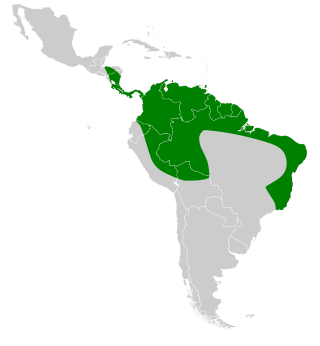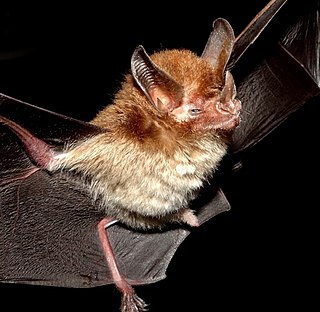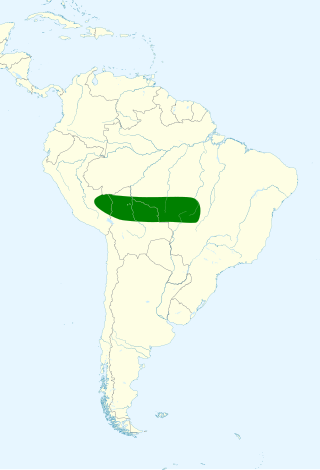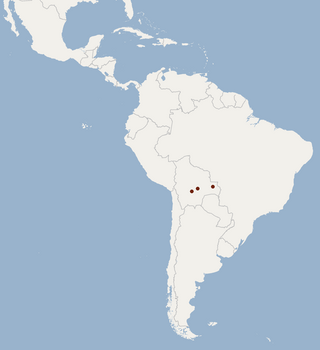
The New World leaf-nosed bats (Phyllostomidae) are bats found from southern North America to South America, specifically from the Southwest United States to northern Argentina. They are ecologically the most varied and diverse family within the order Chiroptera. Most species are insectivorous, but the phyllostomid bats include within their number true predatory species and frugivores. For example, the spectral bat, the largest bat in the Americas, eats vertebrate prey, including small, dove-sized birds. Members of this family have evolved to use food groups such as fruit, nectar, pollen, insects, frogs, other bats, and small vertebrates, and in the case of the vampire bats, even blood.

Brosset's big-eared bat is a bat species found in Brazil, French Guiana, Guyana and Peru. It feeds on insects and sometimes fruit and the exact population is unknown. The only listed threat is deforestation.
Matses's big-eared bat is a bat species found in Peru.

The common big-eared bat is a bat species from South and Central America. It is a member of the family Phyllostomidae.

The white-bellied big-eared bat is a bat species from South and Central America, as well as Trinidad and Tobago in the Caribbean.

Sanborn's big-eared bat is a bat species found in Bolivia and Brazil.

Schmidts's big-eared bat is a bat species from South and Central America.

Micronycteris is a genus of leaf-nosed bats.

Behn's bat, Behn's big-eared bat, or Behn's graybeard bat is a species of bat in the family Phyllostomidae found in Brazil and Peru. It is known only from six specimens and is considered rare. It feeds on insects and small fruits.

Davies's big-eared bat or the graybeard bat is a species of bat in the family Phyllostomidae. It is named after James (Jim) Noel Davies who discovered it whilst on an expedition in Guyana. This was the Cambridge University expedition to the rainforest reserve near Bartica in what was then British Guiana, South America. This species can weigh 30 grams and has a wingspan of up to 50cm. It is bigger than most micronycteris bats with a fierce disposition. A small frog was found in the stomach of a specimen, and the bat is strong-willed enough to chew its way out of a cloth bag.

Phyllostominae is a subfamily of bats that include big-eared, spear-nosed, sword-nosed bats and relatives.
Micronycteris giovanniae is a species of leaf-nosed bat found in Ecuador.

Yates's big-eared bat is a species of leaf-nosed bat found in Bolivia.
The Saint Vincent big-eared bat is a bat species found on the island of Saint Vincent in Saint Vincent and the Grenadines.












